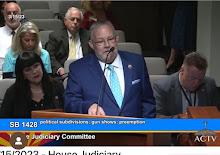There are two kinds of Grassroots: Be the constructive and cooperative Grassroots, not the disruptive and toxic Grassroots.
Grassroots movements have long been recognized as powerful catalysts for social change. They arise from the collective aspirations and concerns of ordinary people, who band together to address pressing issues within their communities. However, it is essential to distinguish between two distinct types of grassroots movements: the constructive and cooperative grassroots versus the disruptive and toxic grassroots. In this blog post, we will delve into the characteristics of each and highlight the significance of fostering the former while mitigating the latter.
Constructive Grassroots Movements:
Constructive grassroots movements are driven by a desire for positive change and are characterized by collaboration, inclusivity, and a commitment to productive dialogue. They are founded on the principles of empathy, respect, and the belief that constructive engagement leads to sustainable solutions. These movements strive to build bridges, unite diverse voices, and harness collective energy to address shared challenges. They seek to inspire and mobilize individuals to work together towards common goals.
Cooperative Grassroots Movements:
Cooperative grassroots movements embrace the power of cooperation and emphasize the importance of collective action. They recognize that lasting change is best achieved through collaboration and synergy, rather than through division and confrontation. These movements foster a sense of community and encourage individuals to find common ground, celebrate diversity, and pool resources and expertise. By working together, they maximize their impact and create a positive ripple effect that can transcend societal barriers.
Disruptive and Toxic Grassroots Movements:
On the other end of the spectrum, there are disruptive and toxic grassroots movements that promote negativity, division, and hostility. These movements often rely on tactics such as online harassment, misinformation, and inflammatory rhetoric. Instead of fostering productive dialogue, they stifle dissenting voices, polarize communities, and perpetuate a culture of conflict. While they may initially gain attention, their disruptive nature ultimately undermines the very change they purport to seek.
Nurturing Constructive Grassroots Movements:
To nurture constructive and cooperative grassroots movements, it is crucial to foster an environment that values open dialogue, active listening, and respectful engagement. Encouraging empathy and understanding can help bridge ideological divides and build a foundation for collaboration. Furthermore, investing in education, grassroots leadership development, and community-building initiatives can empower individuals to become agents of positive change within their communities.
Grassroots movements have the potential to shape societies, challenge the status quo, and drive positive transformation. By embracing the principles of constructiveness, cooperation, and inclusivity, we can channel the collective power of the grassroots towards creating a more equitable and just world. Let us foster an environment that encourages respectful dialogue, celebrates diversity, and supports the growth of constructive grassroots movements. Together, we can create a ripple effect of change that extends far beyond our individual efforts.

